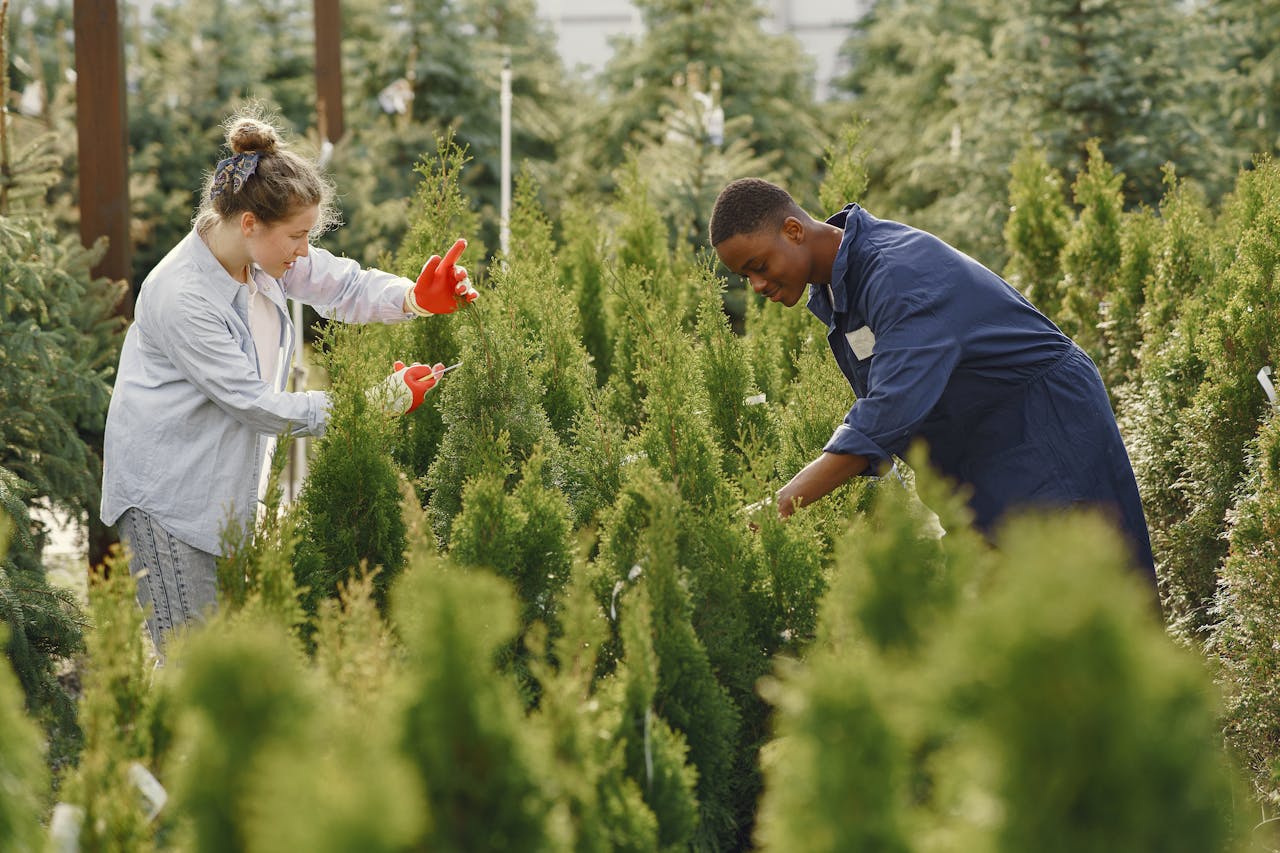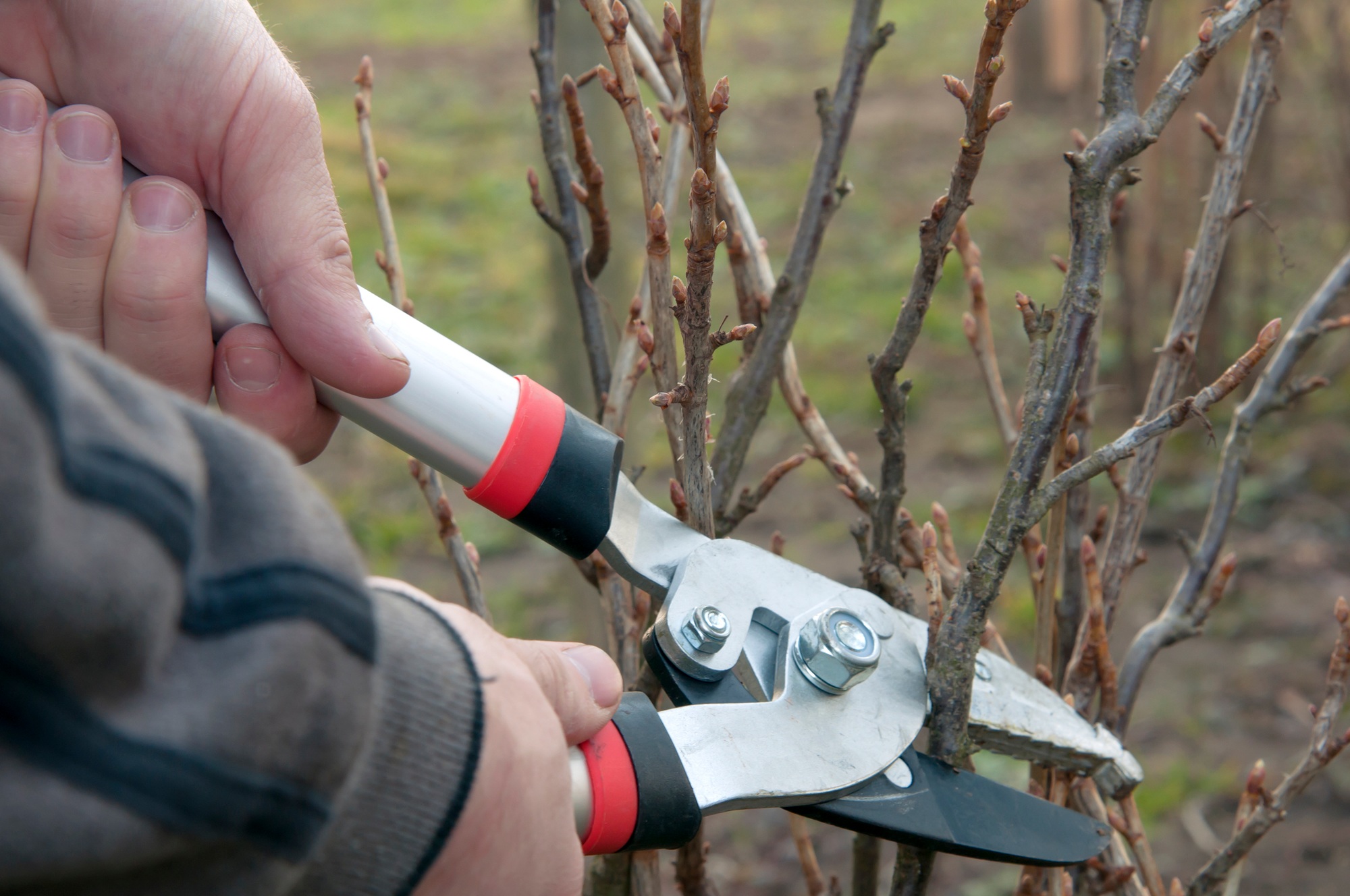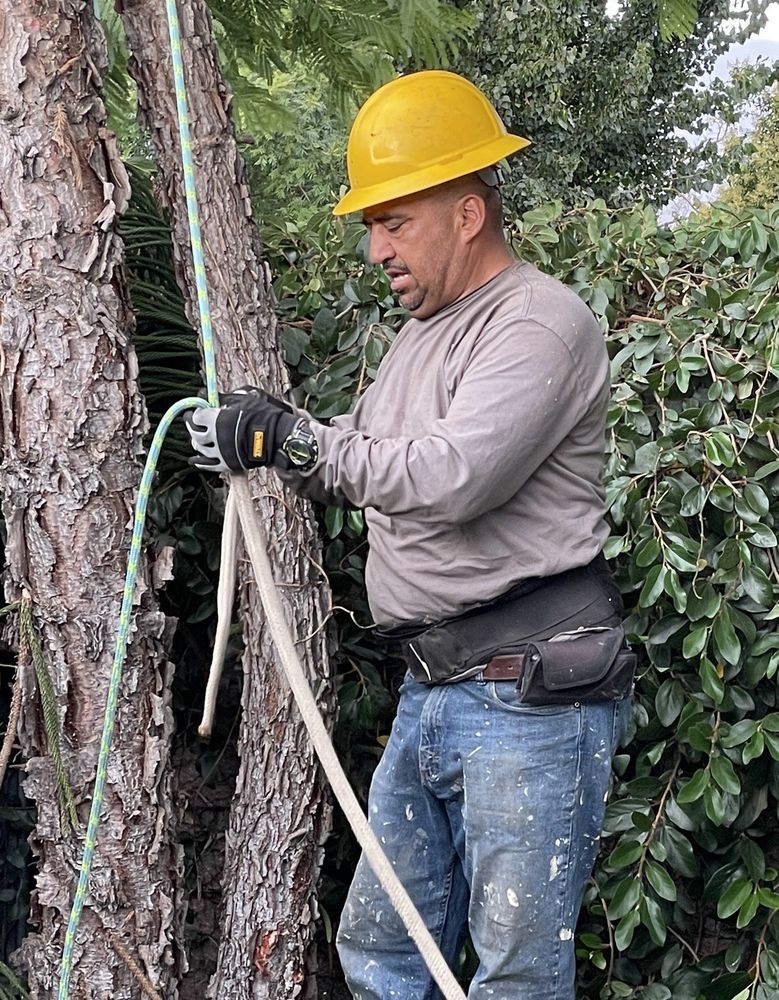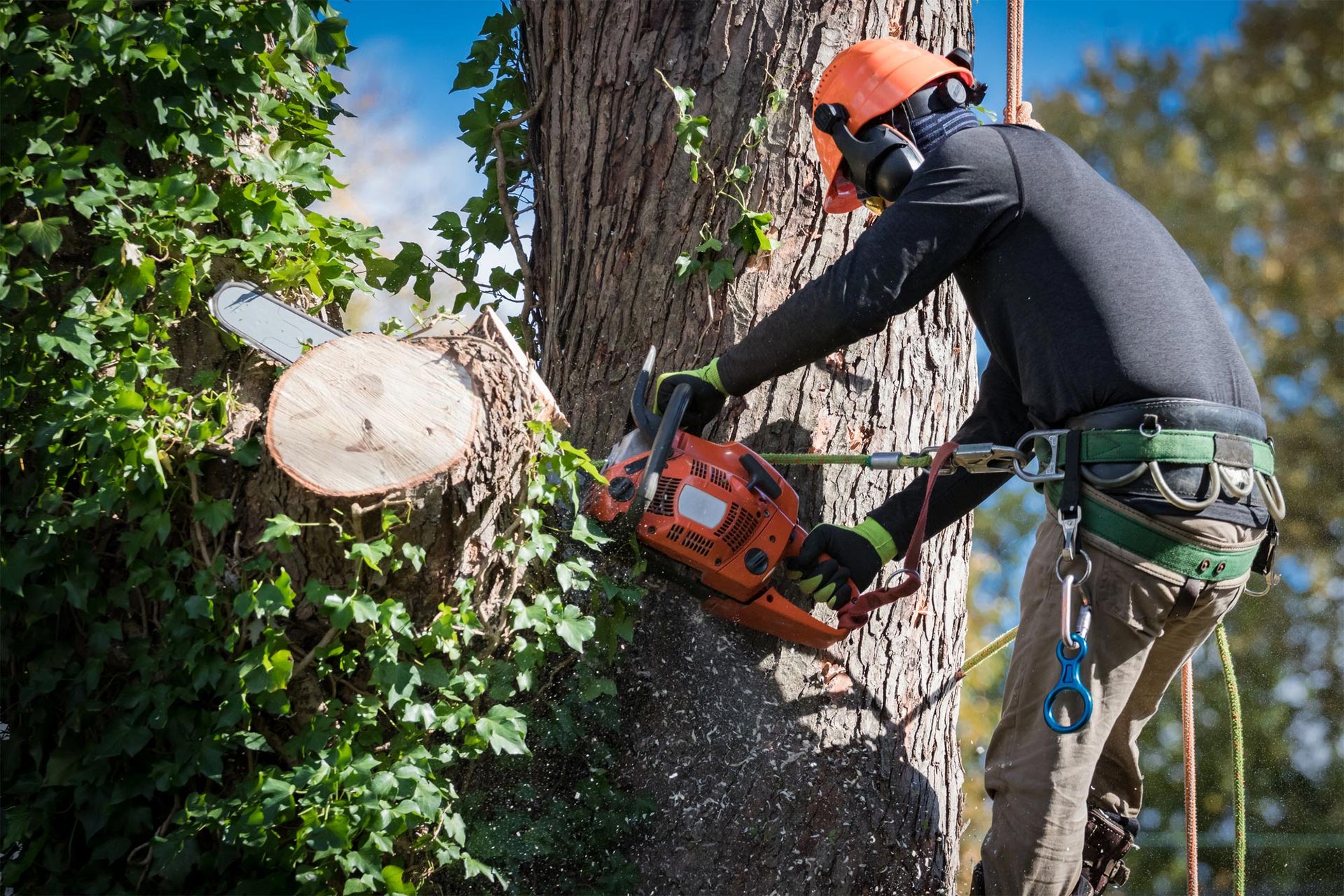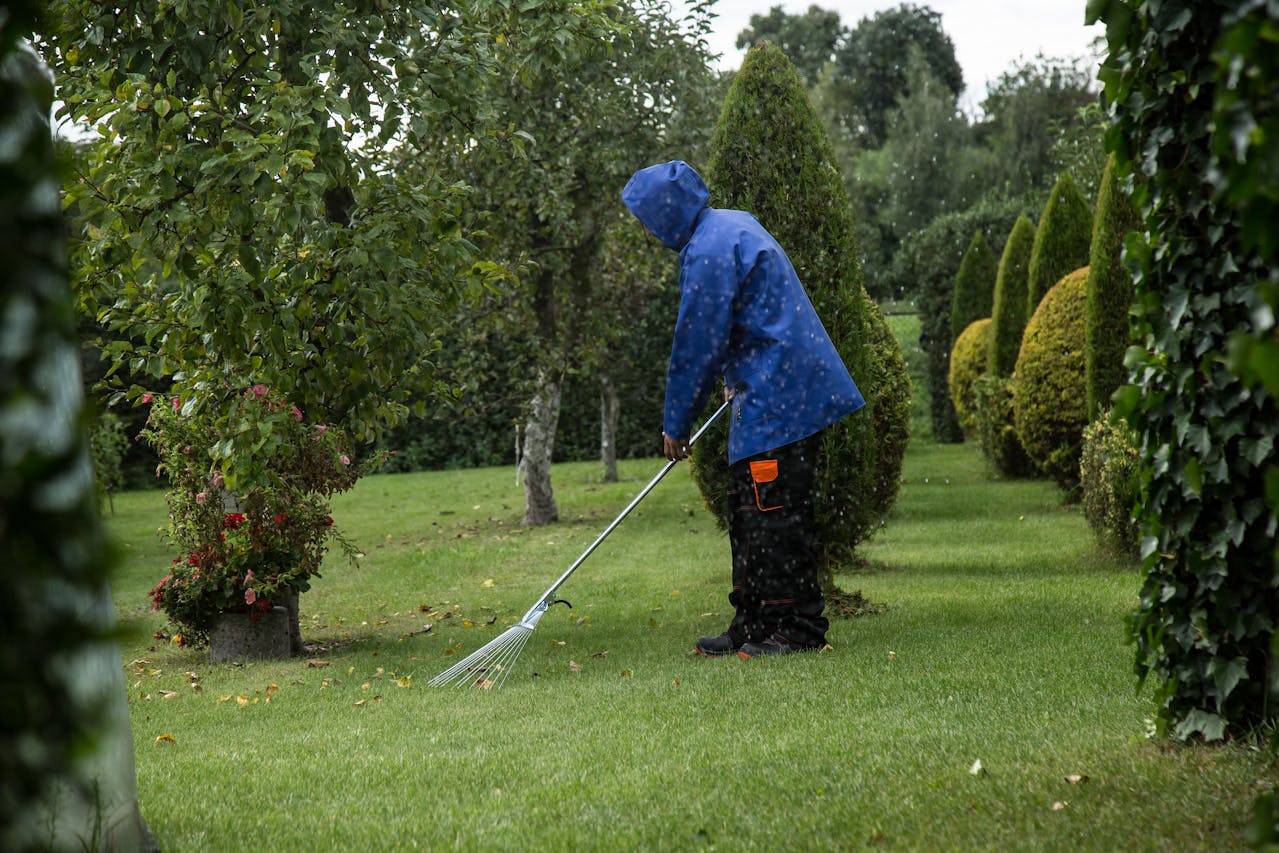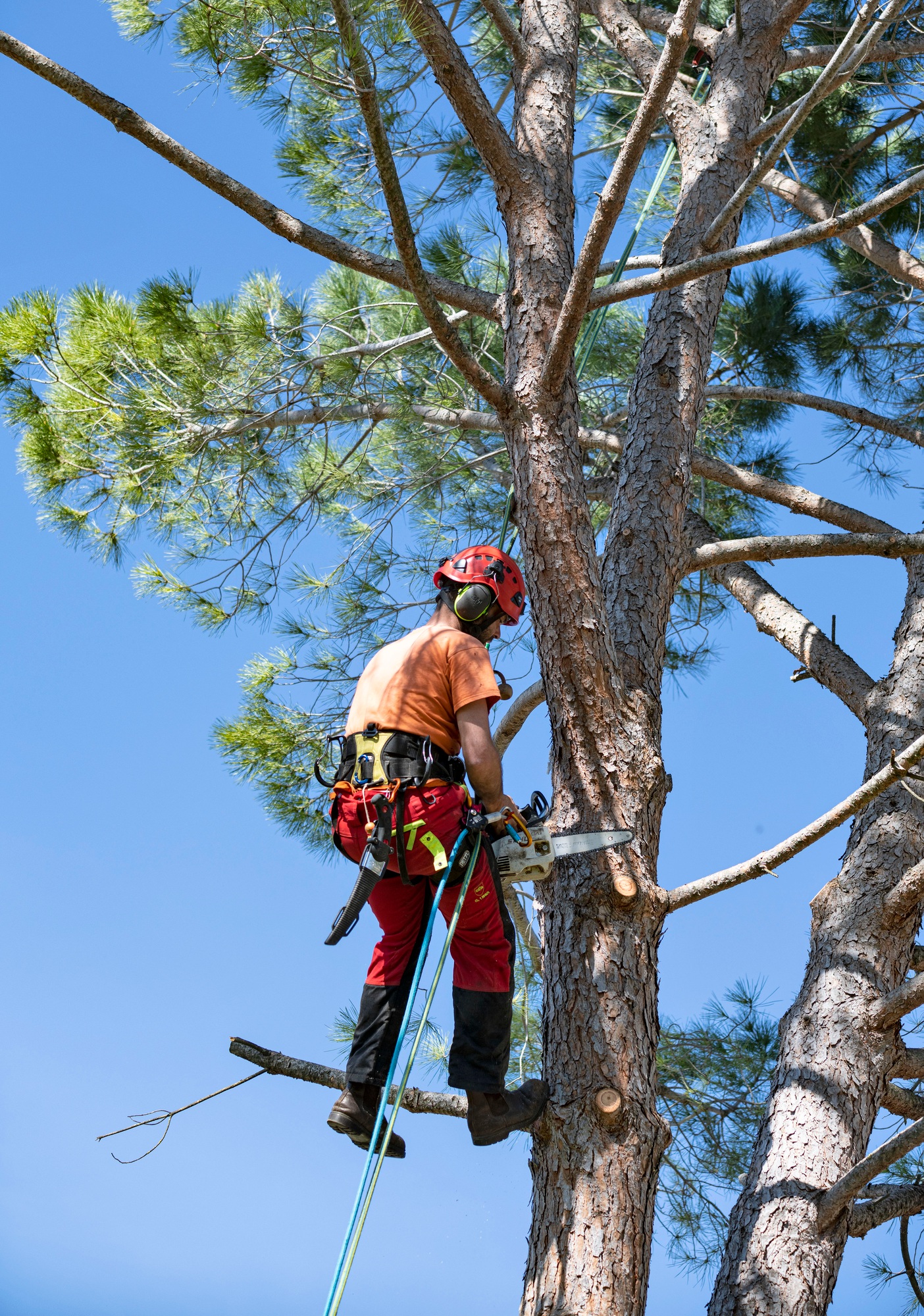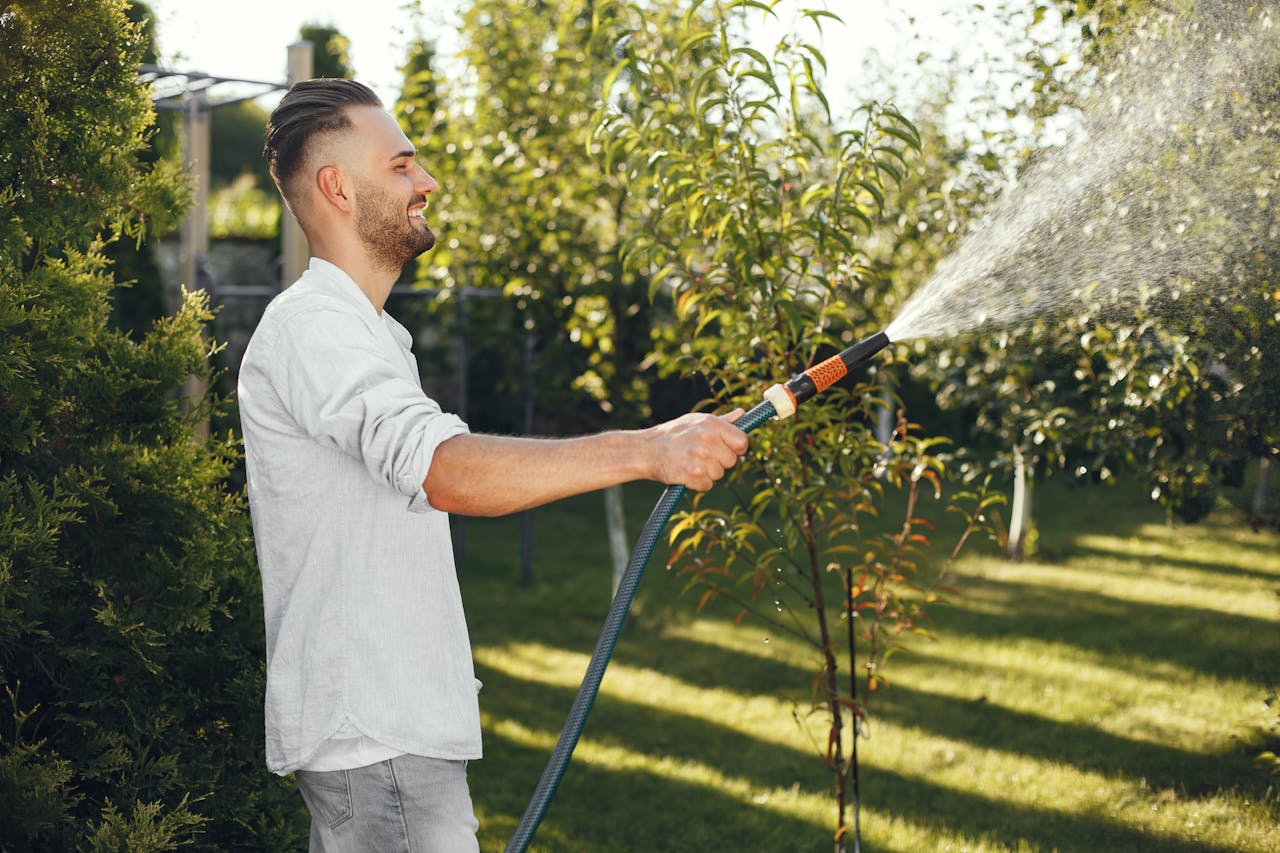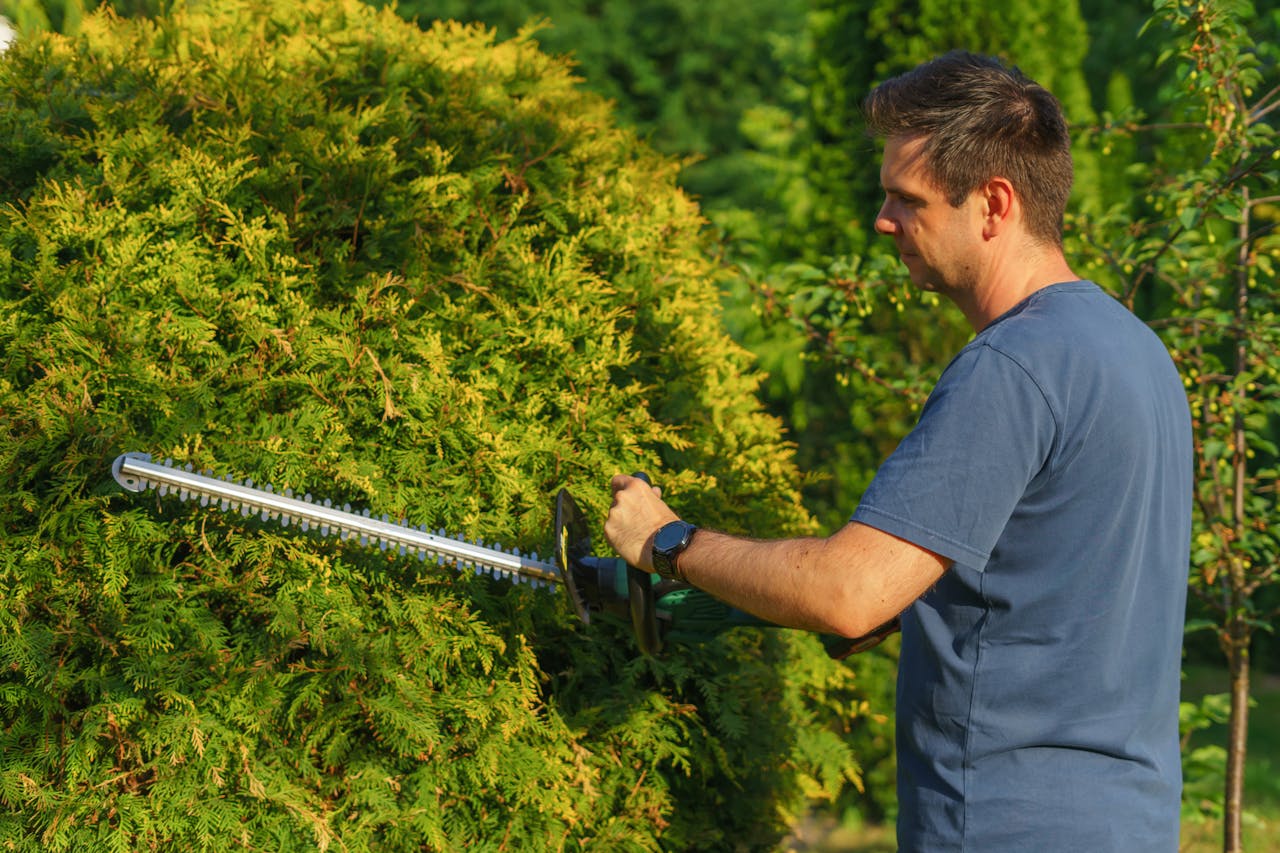Taking care of mature trees is supremely gratifying work. It’s a win-win, not just for our environment but for keeping these majestic giants healthy and strong. These giants provide substantial shade, improved air quality, and beauty to our developed spaces.
More importantly, to keep these trees healthy, consistent monitoring for any signs of disease or pest is key. Pruning allows you to control where and how the tree grows, removing unhealthy, weak branches. Watering them at least once a week, more during dryer spells, will keep them happy and healthy.
Additionally, mulching around the base retains moisture and prevents soil erosion. Soil tests help to determine the nutrient needs of trees, making sure that they get just what they need to flourish. By investing in their care, we invest in their longevity.
In turn, we continue to reap the benefits of their gigantic presence and their valuable contributions to nature and our communities.
Choosing The Right Tree
Suitable Tree Species
Choosing the right tree species for your yard goes beyond aesthetics. More importantly, it’s about selecting species that will flourish in your unique local climate and soil conditions. Look for trees that are tough As nails.
For example, oak and maple trees are popular choices because they’re hardy and require little maintenance. They grow shade and beauty, as well as ecological benefits, thus being perfect candidates for most landscapes. If your region has long, cold winters, consider an evergreen such as spruce or pine to provide winter interest with their greenery.
These trees do more than beautify—they provide essential habitat for local wildlife. Native trees are a great option because they’re already adapted to their environment and often need less maintenance. They protect biodiversity, providing wildlife habitat that contributes to our state’s rich natural heritage.
When shopping for trees, look for disease-resistant varieties. Trees with natural resistance to prevalent pests and diseases will have increased longevity. They further require less long-term care and intervention, leading to less stress for you and your tree.
Transplanting Mature Trees
Moving mature trees takes a lot of foresight. Get the new site ready first, making sure it has the appropriate conditions. Ensure that you have adequate space for the tree’s mature height and spread.
Digging a super wide root ball is key to having the least amount of root damage. By watering it well before you move it, you can help make the transition easier. After transplanting, look out for signs of transplant shock, which may manifest as wilting or leaf drop.
A little TLC over the first weeks will give that tree the best chance at a successful relocation. As tree care practices go, proper mulching is an important one. Mulch insulates roots and retains moisture, helping trees thrive, and it protects the trunk from lawnmowers.
Put down 2 to 4 inches of mulch around the base of the tree, but don’t let it touch the trunk. No matter what else you do, consistent watering is critical—particularly in that first growing season. Mature trees require at least an inch of water per week to thrive and survive.
Basic Care For Mature Trees
Preventive care for mature trees is a complex process focusing on maintaining the vigor and structural stability of large shade trees. It’s important to have an inspection routine in place. Ongoing inspections will allow you to bring any potential problems, such as pests or diseases to light before they become a major threat.
Trees may mask previous damage. This can make them more vulnerable during periods of extreme weather, so it’s important to inspect their health and structure.
Effective Watering Techniques
Efficient watering of mature trees helps them stay healthy enough to withstand stressors. An excellent rule of thumb is to provide about an inch of water per week during dry periods. Deep watering methods, soaking the soil to 12 inches deep, help produce strong root systems.
This method, in contrast to shallow watering, helps promote long-root growth and drought resiliency. Keeping an eye on soil moisture will help you determine how often you need to water so that the roots have steady access to water.
Proper Fertilization Methods
Proper fertilization of trees begins with soil tests to determine what nutrients are lacking. Slow-release fertilizers give consistent nutrition, including nitrogen, phosphorus, and potassium, which are all essential for healthy growth.
Excess fertilizer can damage the environment from runoff, so it’s crucial to use nutrients judiciously. Ongoing soil testing should direct any needed amendments to maintain nutrient levels.
Regular Mulching Practices
Mulching provides a variety of benefits, like retaining moisture, insulation, and protection from mower damage. An organic mulch layer, 2-4 inches thick, works wonders for soil health.
Removing mulch from around the tree’s base avoids rot and pest problems. Replenishing mulch each year keeps the mulch active, and using natural, organic materials—such as shredded leaves or wood chips—enriches the soil over time.
Soil Testing Importance
Regular soil tests will help determine pH and nutrient levels and will help inform what tree care practices are warranted. Repairing damage and deficiencies revealed by testing improves the safety and vitality of the smaller trees.
Once compaction issues have been identified, they can address drainage and root growth concerns. Home soil testing kits take the guesswork out of caring for mature trees and help you easily track changing conditions.
Proper Pruning And Support
Caring for mature trees starts with treating them with an appropriate pruning schedule. This timeline needs to match the tree’s growth cycle to maintain a tree’s best health and longevity. Proper pruning involves removing dead, diseased, or damaged branches, which is an important part of tree maintenance.
This practice frees up the tree’s energy resources for healthy growth. I never, ever, ever finish a cut, no matter how minor, without cutting cleanly and precisely at the right spots. This technique allows the tree to heal the wound quickly and efficiently.
For younger trees, proper use of support systems, such as stakes and ties, can promote healthy, straight growth and ward off issues later in life.
Pruning Techniques For Older Trees
Even with older trees, going back to basics with the right pruning techniques can preserve a healthy structure. I focus on crossing branches first since these can be very damaging and limit airflow, which can lead to diseases.
When cutting large branches, utilize a three-step cutting process to avoid ripping the bark—a key step in avoiding infection. Pruning during the dormant season, typically late winter in many regions, reduces stress on the tree and allows it to recover as growth resumes in spring.
First, create an undercut. Third, place a final top cut and complete with a removal cut, ensuring that the bark ridge is not removed.
SupportingLearningg Or Fast-Growing Limbs
Whether you’re trying to support a heavy, over-extended limb or a rapidly growing one, braces and cables provide supplemental support. Frequent inspections are necessary to make sure these supports aren’t outdated and worn, as well as to adjust them when necessary.
Properly pruning back limbs that grow quickly ensures that the tree continues to grow, creating no future hazards. Monitoring for any signs of stress in the supported branches will help ensure a healthy tree long after the initial restoration efforts have taken place.
A heavily leaning branch, too, can be supported with cable bracing to protect it during extreme wind events. This is a common scenario in temperate climates.
Protecting Roots And Trunks
Protecting the health of large, existing trees starts with the tree roots. Building these barriers is a simple and effective method to protect these critical components from construction or landscaping disruptions. For example, fencing protects against lawnmowers, weed eaters, and even vehicles as fencing keeps roots out of the way.
It’s excellent in cold weather, protecting roots under snow and ice. Keeping the soil in the root zone loose is very important because compacted soil can block root growth and nutrient absorption. Aeration techniques, including the application of compost tea, help build nutrient-rich soils, feeding the roots what they need to thrive.
Mulch is an important part of caring for your tree’s roots. Mulching the root zone insulates trees from heat and cold. This practice not only protects against moisture loss but also protects a stable environment for healthy growth. Timely, routine inspections can help spot early signs of root damage or disease.
Stressed trees, which can expand upwards of 15% of their energy-developing chemical defenses, are no longer able to withstand the onslaught. With monitoring in place, as well as timely interventions, we can help ensure roots remain healthy.
Root Protection Strategies
Using root barriers helps to direct growth away from built structures, preventing possible conflicts before they happen. Don’t plant invasive species. Invasive species outcompete natives for resources. Compost tea nourishes and strengthens the root ecosystem.
The monitoring of roots and trunks for rot or disease is imperative, enabling a swift response to any problems.
Trunk Safeguarding Methods
Trunk protection means encasing them in cold spells. This serves to protect the tree from the elements and to prevent bark injury. A tall deer-proof fence or a 4-foot high trunk protector will prevent deer from chewing the bark.
Mowing or other equipment operations near trees should be conducted with care to avoid causing injury. An open circle around the trunk promotes vigorous growth. Continual pruning allows for the culling of hazardous branches, lessening future impact and damage.
Taking care of mature trees is supremely gratifying work. It’s a win-win, not just for our environment but for keeping these majestic giants healthy and strong. These giants provide substantial shade, improved air quality, and beauty to our developed spaces.
More importantly, to keep these trees healthy, consistent monitoring for any signs of disease or pest is key. Pruning allows you to control where and how the tree grows, removing unhealthy, weak branches. Watering them at least once a week, more during dryer spells, will keep them happy and healthy.
Additionally, mulching around the base retains moisture and prevents soil erosion. Soil tests help to determine the nutrient needs of trees, making sure that they get just what they need to flourish. By investing in their care, we invest in their longevity.
In turn, we continue to reap the benefits of their gigantic presence and their valuable contributions to nature and our communities.
Choosing The Right Tree
Suitable Tree Species
Choosing the right tree species for your yard goes beyond aesthetics. More importantly, it’s about selecting species that will flourish in your unique local climate and soil conditions. Look for trees that are tough As nails.
For example, oak and maple trees are popular choices because they’re hardy and require little maintenance. They grow shade and beauty, as well as ecological benefits, thus being perfect candidates for most landscapes. If your region has long, cold winters, consider an evergreen such as spruce or pine to provide winter interest with their greenery.
These trees do more than beautify—they provide essential habitat for local wildlife. Native trees are a great option because they’re already adapted to their environment and often need less maintenance. They protect biodiversity, providing wildlife habitat that contributes to our state’s rich natural heritage.
When shopping for trees, look for disease-resistant varieties. Trees with natural resistance to prevalent pests and diseases will have increased longevity. They further require less long-term care and intervention, leading to less stress for you and your tree.
Transplanting Mature Trees
Moving mature trees takes a lot of foresight. Get the new site ready first, making sure it has the appropriate conditions. Ensure that you have adequate space for the tree’s mature height and spread.
Digging a super wide root ball is key to having the least amount of root damage. By watering it well before you move it, you can help make the transition easier. After transplanting, look out for signs of transplant shock, which may manifest as wilting or leaf drop.
A little TLC over the first weeks will give that tree the best chance at a successful relocation. As tree care practices go, proper mulching is an important one. Mulch insulates roots and retains moisture, helping trees thrive, and it protects the trunk from lawnmowers.
Put down 2 to 4 inches of mulch around the base of the tree, but don’t let it touch the trunk. No matter what else you do, consistent watering is critical—particularly in that first growing season. Mature trees require at least an inch of water per week to thrive and survive.
Basic Care For Mature Trees
Preventive care for mature trees is a complex process focusing on maintaining the vigor and structural stability of large shade trees. It’s important to have an inspection routine in place. Ongoing inspections will allow you to bring any potential problems, such as pests or diseases to light before they become a major threat.
Trees may mask previous damage. This can make them more vulnerable during periods of extreme weather, so it’s important to inspect their health and structure.
Effective Watering Techniques
Efficient watering of mature trees helps them stay healthy enough to withstand stressors. An excellent rule of thumb is to provide about an inch of water per week during dry periods. Deep watering methods, soaking the soil to 12 inches deep, help produce strong root systems.
This method, in contrast to shallow watering, helps promote long-root growth and drought resiliency. Keeping an eye on soil moisture will help you determine how often you need to water so that the roots have steady access to water.
Proper Fertilization Methods
Proper fertilization of trees begins with soil tests to determine what nutrients are lacking. Slow-release fertilizers give consistent nutrition, including nitrogen, phosphorus, and potassium, which are all essential for healthy growth.
Excess fertilizer can damage the environment from runoff, so it’s crucial to use nutrients judiciously. Ongoing soil testing should direct any needed amendments to maintain nutrient levels.
Regular Mulching Practices
Mulching provides a variety of benefits, like retaining moisture, insulation, and protection from mower damage. An organic mulch layer, 2-4 inches thick, works wonders for soil health.
Removing mulch from around the tree’s base avoids rot and pest problems. Replenishing mulch each year keeps the mulch active, and using natural, organic materials—such as shredded leaves or wood chips—enriches the soil over time.
Soil Testing Importance
Regular soil tests will help determine pH and nutrient levels and will help inform what tree care practices are warranted. Repairing damage and deficiencies revealed by testing improves the safety and vitality of the smaller trees.
Once compaction issues have been identified, they can address drainage and root growth concerns. Home soil testing kits take the guesswork out of caring for mature trees and help you easily track changing conditions.
Proper Pruning And Support
Caring for mature trees starts with treating them with an appropriate pruning schedule. This timeline needs to match the tree’s growth cycle to maintain a tree’s best health and longevity. Proper pruning involves removing dead, diseased, or damaged branches, which is an important part of tree maintenance.
This practice frees up the tree’s energy resources for healthy growth. I never, ever, ever finish a cut, no matter how minor, without cutting cleanly and precisely at the right spots. This technique allows the tree to heal the wound quickly and efficiently.
For younger trees, proper use of support systems, such as stakes and ties, can promote healthy, straight growth and ward off issues later in life.
Pruning Techniques For Older Trees
Even with older trees, going back to basics with the right pruning techniques can preserve a healthy structure. I focus on crossing branches first since these can be very damaging and limit airflow, which can lead to diseases.
When cutting large branches, utilize a three-step cutting process to avoid ripping the bark—a key step in avoiding infection. Pruning during the dormant season, typically late winter in many regions, reduces stress on the tree and allows it to recover as growth resumes in spring.
First, create an undercut. Third, place a final top cut and complete with a removal cut, ensuring that the bark ridge is not removed.
SupportingLearningg Or Fast-Growing Limbs
Whether you’re trying to support a heavy, over-extended limb or a rapidly growing one, braces and cables provide supplemental support. Frequent inspections are necessary to make sure these supports aren’t outdated and worn, as well as to adjust them when necessary.
Properly pruning back limbs that grow quickly ensures that the tree continues to grow, creating no future hazards. Monitoring for any signs of stress in the supported branches will help ensure a healthy tree long after the initial restoration efforts have taken place.
A heavily leaning branch, too, can be supported with cable bracing to protect it during extreme wind events. This is a common scenario in temperate climates.
Protecting Roots And Trunks
Protecting the health of large, existing trees starts with the tree roots. Building these barriers is a simple and effective method to protect these critical components from construction or landscaping disruptions. For example, fencing protects against lawnmowers, weed eaters, and even vehicles as fencing keeps roots out of the way.
It’s excellent in cold weather, protecting roots under snow and ice. Keeping the soil in the root zone loose is very important because compacted soil can block root growth and nutrient absorption. Aeration techniques, including the application of compost tea, help build nutrient-rich soils, feeding the roots what they need to thrive.
Mulch is an important part of caring for your tree’s roots. Mulching the root zone insulates trees from heat and cold. This practice not only protects moisture lo but also protects a stable environment for healthy growth. Timely, routine inspections can help spot early signs of root damage or disease.
Stressed trees, which can expand upwards of 15% of their energy-developing chemical defenses, are no longer able to withstand the onslaught. With monitoring in place, as well as timely interventions, we can help ensure roots remain healthy.
Root Protection Strategies
Using root barriers helps to direct growth away from built structures, preventing possible conflicts before they happen. Don’t plant invasive species. Invasive species outcompete natives for resources. Compost tea nourishes and strengthens the root ecosystem.
The monitoring of roots and trunks for rot or disease is imperative, enabling a swift response to any problems.
Trunk Safeguarding Methods
Trunk protection means encasing them in cold spells. This serves to protect the tree from the elements and to prevent bark injury. A tall deer-proof fence or a 4-foot high trunk protector will prevent deer from chewing the bark.
Mowing or other equipment operations near trees should be conducted with care to avoid causing injury. An open circle around the trunk promotes vigorous growth. Continual pruning allows for the culling of hazardous branches, lessening future impact and damage.

Managing Tree Health
Caring for mature trees means monitoring their day-to-day health and condition. Determining a monitoring schedule is an important first step. With consistent tree inspections, you can identify the earliest signs of tree health issues, like drooping or decaying branches.
Monitoring tree canopies for abnormal growth or leaf color is key to identifying when trees are stressed. Having a record of how the tree has changed over time helps you make a more accurate determination of tree health. Prompt response to known concerns stops the cycle of destruction.
Preventing Pests And Diseases
Routine monitoring for pests and diseases is key. Check for curling, yellowing, or other signs of distress. Adopt preventive practices such as deep watering and annual mulching with a two to four-inch layer of organic mulch.
Sanitation cleaning tools and equipment are key to preventing disease spread. Promoting beneficial insects that keep destructive pests in check can be an easy practice with a big impact.
Recognizing Health Issues
Learn to recognize the early warning signs of tree stress. This could be anything from drooping or dead limbs. Pay very close attention to the foliage and take careful notes of how it changes.
The key to avoiding further damage is to act quickly on any issues that may come up. Routine monitoring through the growing season for the common pests in your region can prevent widespread infestations.
Importance Of Regular Maintenance
Complete them every year to evaluate the health and structural integrity of your trees. A robust tree maintenance plan should cover regular watering, fertilizing, and pruning.
Even established trees should be watered supplementally during dry periods. Amending the soil with compost improves and diversifies it with beneficial organisms.
Working with an ISA-certified arborist on an ongoing basis ensures your trees thrive and helps avoid costly, dangerous issues. Many winter storm-related failures of trees in urban and suburban settings can be attributed to improper pruning.
Conclusion
Beyond their beauty, keeping mature trees healthy protects an important and valuable part of our environment. Select the best tree for your environment to make a long-term difference. Through ongoing maintenance and a few basic pruning techniques, you can help make sure these magnificent trees live long, healthy lives. Don’t forget about roots and trunks, which need protection from compaction and wounds. Be proactive in caring for their health to avoid unnecessary injuries or death. Our trees give us relief from the heat, cleaner air, and a beautiful environment. It’s only right that we reciprocate with a little TLC of our own! Want to ensure your trees receive the proper care they need? Read our complete guide and begin improving your backyard forest today!
Take Control Of Overgrown Trees With JC Tree Service
Overgrown trees can quickly turn a beautiful landscape into a safety concern or an eyesore. At JC Tree Service, we specialize in managing overgrown trees for homes and businesses in Brentwood, Antioch, and surrounding areas. Whether your trees require pruning, trimming, or a full risk assessment, our skilled team is here to restore your property’s safety, health, and beauty.
Our overgrown tree services are designed to eliminate hazards posed by heavy or encroaching branches, protect your property from potential damage, and enhance your curb appeal. With regular tree care, we ensure proper growth, prevent risks from weakened limbs, and promote the long-term health of your trees. At JC Tree Service, we focus on eco-friendly practices, offering solutions tailored to your needs while keeping your outdoor space safe, organized, and visually stunning.
Don’t let overgrown trees jeopardize your property’s safety or charm. Contact JC Tree Service today for a free, no-obligation quote. Let us help you bring your landscape back to life with expert tree care!
Disclaimer
The materials available on this website are for informational and entertainment purposes only and not to provide legal or professional advice. You should contact your attorney or home improvement specialist to obtain advice concerning any particular issue or problem. You should not act or refrain from acting based on any content included in this site without seeking legal or other professional advice. The information presented on this website may not reflect the most current home improvement developments. No action should be taken in reliance on the information on this website. We disclaim all liability concerning actions taken or not taken based on any or all of the contents of this site to the fullest extent permitted by law.


